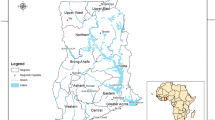Abstract
Quantitative environmental impact assessment (EIA) provides a tool for decision makers and the public to understand issues relating to sustainable development. The use of advanced hydro-environmental modelling and visualization technology can help to provide an intuitive and interactive digital platform to better communicate EIA issues and thus promote continuous public involvement and stakeholder engagement. Such a platform must be based on a robust hydrodynamic model engine that provides seamless predictions from the near to far field. This lecture summarizes the key issues of impact assessment in urban coastal cities, and presents examples of impact assessment of several major sewage outfalls, including the Hong Kong Harbour Area Treatment Scheme. The predictions of a recently developed Distributed Entrainment Sink Approach (DESA) for dynamic coupling of the near and far fields are compared with alternative “actual source" approaches and field experiments. The conceptual elements of a real time water quality forecast and management system are outlined.
Similar content being viewed by others
References
Bleninger T, Jirka GH (2004) Near- and far-field model coupling methodology for wastewater discharges. In: Lee JHW, Lam KM (eds) Environmental hydraulics and sustainable water management. Taylor & Francis, London, pp 447–453
Choi KW, Lee JHW (2007) Distributed entrainment sink approach for modelling mixing and transport in intermediate field. J Hydraul Eng, ASCE 133(7): 804–815
Choi KW, Lee JHW (2007) Reply to Discussion of “Distributed entrainment sink approach for modelling mixing and transport in the intermediate field". J Hydraul Eng, ASCE 134 (December 2008, in press).
Hamrick JM (1992) A three-dimensional environmental fluid dynamics computer code: theoretical and computational aspects. The College of William and Mary, Virginia Institute of Marine Science, Special Report 317, 63 pp
Kim YD, Seo IW, Kang SW, Oh BC (2002) Jet integral—particle tracking hybrid model for single buoyant jets. J Hydraul Eng, ASCE 128: 753–760
Lai ACH, Yu D, Lee JHW (2007) Near and intermediate field mixing of a rosette jet group, Proceedings of the fifth international symposium on environmental hydraulics, Tempe, Arizona, USA (CD-ROM), 4–7 December 2007
Lee JHW, Cheung V (1990) Generalized Lagrangian model for buoyant jets in current. J Environ Eng, ASCE 116(6): 1085–1105
Lee JHW, Cheung V, Wang WP, Cheung SKB (2000) Lagrangian modeling and visualization of rosette outfall plumes. Proceedings of the hydroinformatics 2000, Iowa (CDROM), 23–27 July 2000
Lee JHW, Chu V (2003) Turbulent jets and plumes—a Lagrangian approach. Kluwer Academic Publishers, 390 pp
Li S, Hodgins DO (2004) A dynamically coupled outfall plume-circulation model for effluent dispersion in Burrard Inlet, British Columbia. J Environ Eng Sci 3: 433–449
Li S, Hodgins DO (2008) Field and numerical investigation of the fate and effects of wastewater discharges into coastal waters. Proceedings of the international conference on waste engineering and management, Hong Kong, 28–30 May
Mancini JL (1978) Numerical estimates of coliform mortality rates under various conditions. J WPCF 50: 2477–2484
Roberts PJW, Snyder WH, Baumgartner DJ (1989) Ocean outfalls, I: submerged wastefield formation. J Hydraul Eng, ASCE 115(1): 1–25
Signell R P, Jenter H L, Blumberg A F (2000) Predicting the physical effects of relocating Boston’s Sewage Outfall. Estuar Coast Shelf Sci 50: 59–72
Wong KTM, Lee JHW, Hodgkiss IJ (2007) A simple model for forecast of coastal algal blooms. Estuar Coast Shelf Sci 74: 175–196
Zhang XY, Adams EE (1999) Prediction of near field plume characteristics using far field circulation model. J Hydraul Eng, ASCE 125(3): 233–241
Author information
Authors and Affiliations
Corresponding author
Rights and permissions
About this article
Cite this article
Lee, J.Hw., Choi, K.W. Real-time hydro-environmental modeling and visualization system for public engagement. Environ Fluid Mech 8, 411–421 (2008). https://doi.org/10.1007/s10652-008-9115-2
Received:
Accepted:
Published:
Issue Date:
DOI: https://doi.org/10.1007/s10652-008-9115-2




